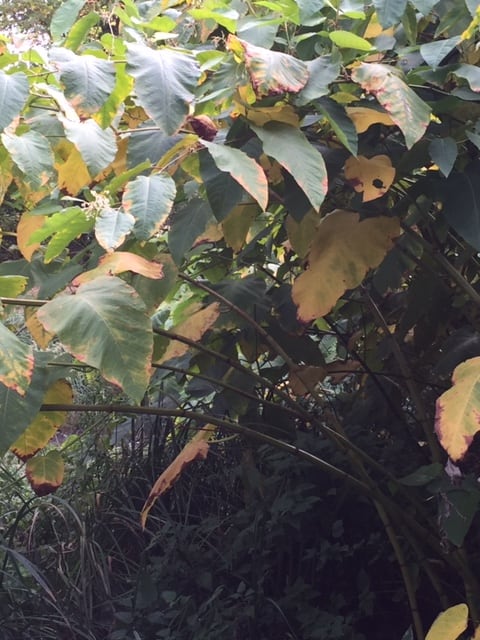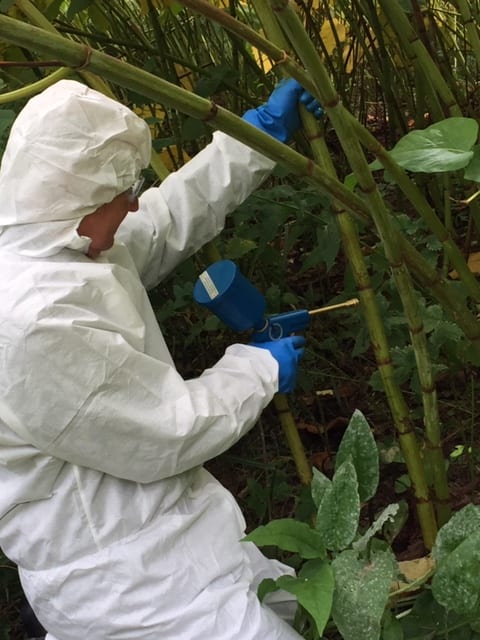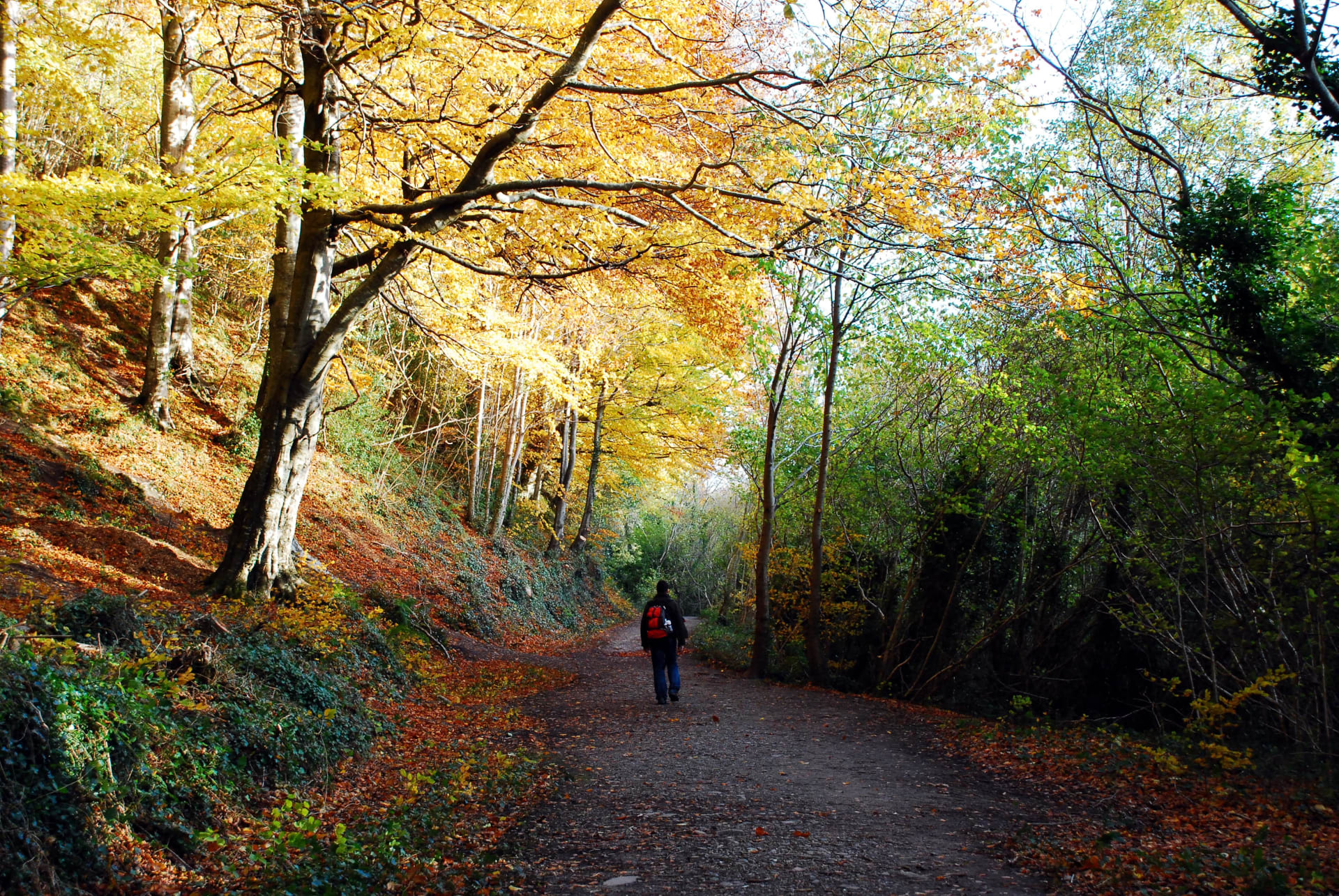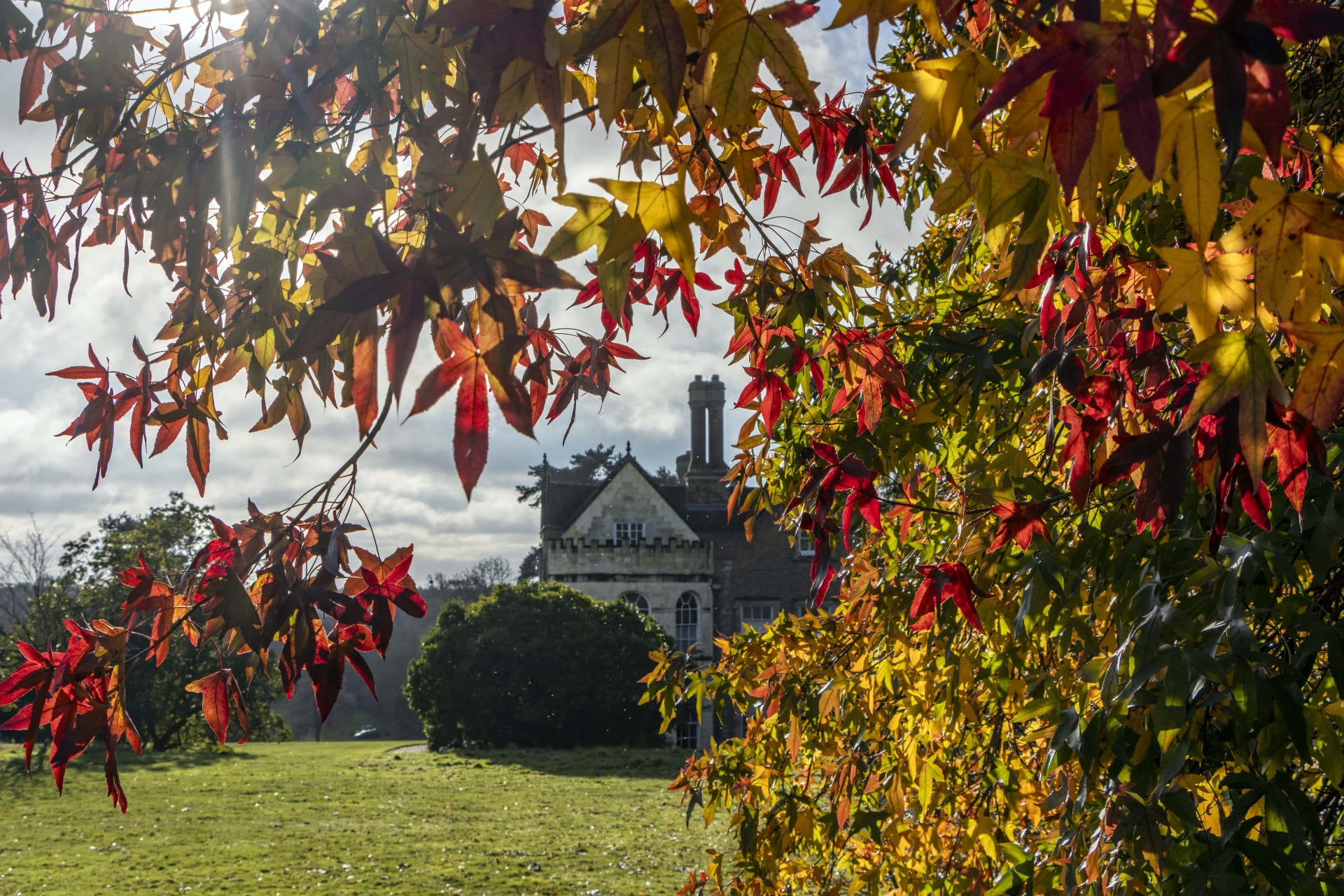As we head into August, are weeds taking over your borders and outdoor space? Are they swamping the plants and shrubs you have spent good money on, taking all the nutrients from the soil? Before you start planning your autumn border tidy-up, use the weeds that are growing to give you an insight into how nutritious your garden soil is and whether it is neutral, alkaline or acidic – weeds are particularly good at providing us with key information.
If the weeds are prolific and multiply rapidly, your soil is very fertile. If the weeds are struggling to grow, you will need to do some work in the autumn and build the condition of the soil. If you have a diverse range of weeds happily growing, and it is a new garden that you are about to plant, you will be able to grow a wide range of plants.
THE GOOD
Annuals and Perennials
Depending on your soil, annual weeds can be kept under control with regular hoeing but will spread rapidly in some cases when their seed heads are left to blow. One example of this is Cardamine hirsuta or as it is commonly called Hairy Bittercress which produce small white flowerheads growing just a few centimetres tall. These form seed pods which explode, dispersing seeds far and wide. Before you know it, any bare patch of soil is covered.
Another common annual is Stellaria media or chickweed. In its young form, chickweed is edible and can be added to salads as it is loaded with vitamins. However, if you are growing edibles in your garden, dig it up as soon as possible as it will encourage both greenfly and spider mite.
Oxalis corniculate, known as Yellow Oxalis or creeping wood sorrel has clover-like foliage and can quickly take over, producing vast quantities of seeds once its tiny yellow flowers have bloomed. Most of us have also encountered Senecio vulgaris or groundsel in our borders. Growing up to 60cms, producing small yellow flower heads before turning to seed heads that are white and fluffy, travelling distances. The plus side of this wildflower is that it supports pollinators and biodiversity as both the flowers and seeds attract bees, butterflies and hoverflies.
Perennial weeds produce deep roots, storing food preserves to keep them going from year to year. There are those such as dandelions (Taraxacum) with deep tap roots that can fall within the ‘good’ category of weeds. Their nectar-rich yellow flowers provide food to many insects and birds, particularly loved by bees and butterflies. Bullfinches, greenfinches, goldfinches and serins happily eat the dandelion seeds before they blow everywhere. If you choose to remove dandelions, the easiest way is to dig them up, ensuring you have got to the bottom of their strong tap root.
Another native wildflower, which can be perceived as a perennial weed is creeping buttercup (Ranunculus repens). This plant with its bright yellow flowers enjoys growing in wet conditions but can also withstand periods of drought due to its deep roots. Buttercups support a range of wildlife including bees, butterflies and beetles however, like other specifies of buttercup, these plants are harmful if eaten and can cause skin irritation.
Common stinging nettles (Urtica dioica) take root in many gardens. This herbaceous perennial has creeping horizontal stems and spreading roots which survive cold winters, producing new growth in the spring. Whilst a sting from their hairy leaves is not pleasant, nettles can support over 40 insect species. Ladybird larvae eat nettles and as adult ladybirds eat pests such as aphids, they are welcome in most gardens. Nettles can also be a valuable source of food for hedgehogs, shrews, frogs and toads. When the plants are young, humans can safely eat the stems and tender young leaves, however they should not be consumed once they set flowers as they produce a substance which can interfere with kidney function.
So, we have touched on just a few of the common annual and perennial weeds that do not cause massive problems if left to grow in our gardens.
THE BAD
‘Bad’ weeds include ground elder (Aegopodium podagraria), bindweed and horsetail (Equisetum arvense). They all have roots which, when you are trying to dig them out, you need to remove everything you find; leave just a couple of millimetres to regrow, and you will soon be back to square one. With this group of perennial weeds, it is important not to put their roots in your compost bin to avoid spreading them further around your garden.
Ground elder is a vigorous and invasive clump-forming perennial with its roots forming a network growing down to 15cms, sometimes deeper, below the surface of the soil. If it is overtaking your borders growing between the plants, it is best (if possible) to dig those plants up, and wash their roots, which will allow you to tease out the white ground elder roots. Before replanting spend time carefully digging the soil, lifting out everything you find. It is likely that you will not get rid of ground elder easily and it can take weeks or months of work to dig it up. Regular cutting of its foliage just below ground level with a hoe can gradually weaken the plant but this needs to be done weekly as it quickly regrows and everything you cut needs removing.
Bindweed can also quickly take over in a garden, twining up through your plants, shrubs and trees, dying back in the winter but do not be fooled, its deep rhizome roots lie beneath the surface and will quickly reappear once the temperatures rise. There are two types you may encounter: hedge bindweed (Calystegia sepium) with pure white trumpet flowers and the smaller, field bindweed (Convolvulus arvensis) with white or pink flowers, problematic in long grass and bare soil. Whilst their trumpet like flowers provide pollen for bees and their leaves are a source of food for the larvae of convolvulus hawk moth, they can take over a garden if left to their own devices. Like ground elder, their white roots are brittle and small pieces will quickly form new plants. They are also quite deep rooted and digging them up can involve working down from where the green leaves appear and finding the source of the roots which can be spaghetti like as you unearth them.
If you encounter horsetail in your garden, you are dealing with an invasive, deep-rooted perennial weed which spreads quickly, forming dense foliage, up to 75cm tall, crowding out less vigorous plants. It is even strong enough to break through a tarmac driveway. It will appear in spring with fertile, light brown stems, with a cone-like spore producing structure at the end of the stems. The sterile green shoots develop into fir tree-like plants but its high silica content makes it poisonous if consumed. Horsetail can put down roots up to 2.5m – sometimes deeper – and its black underground rhizomes grow quickly, spreading over great distances. Due to the depth the roots grow, it is extremely difficult to remove by digging out. If they appear in a lawn, regular mowing can help to control the plants growing upwards but does not stop the root system spreading. Be careful as you attempt to dig it out that you do not chop up the roots which will make the problem worse. Removing the shoots as soon as they appear above ground level can, over a long period of time, may reduce infestation. When digging up the roots, do not under any circumstances throw them into your compost. Some Council’s will not even allow you to discard them in green waste but require you to burn them.
THE UGLY
The really ugly plant that you do not want to see growing in or near your property is Japanese Knotweed (Reynoutria japonica syn. Fallopia japonica). Originally introduced to Britain as an ornamental garden plant, its root system can infiltrate building foundations, growing through tarmac, paving and even flood defences. Its presence can devalue properties significantly and since 2013, anyone selling a property is required by law to state if Japanese knotweed is present on their property through a TA6 form. If it is, you have to provide a management plan for its eradication from a professional company. Likewise, if you are buying a property your mortgage lender will require assurance that it will be eradicated before agreeing the funds.










